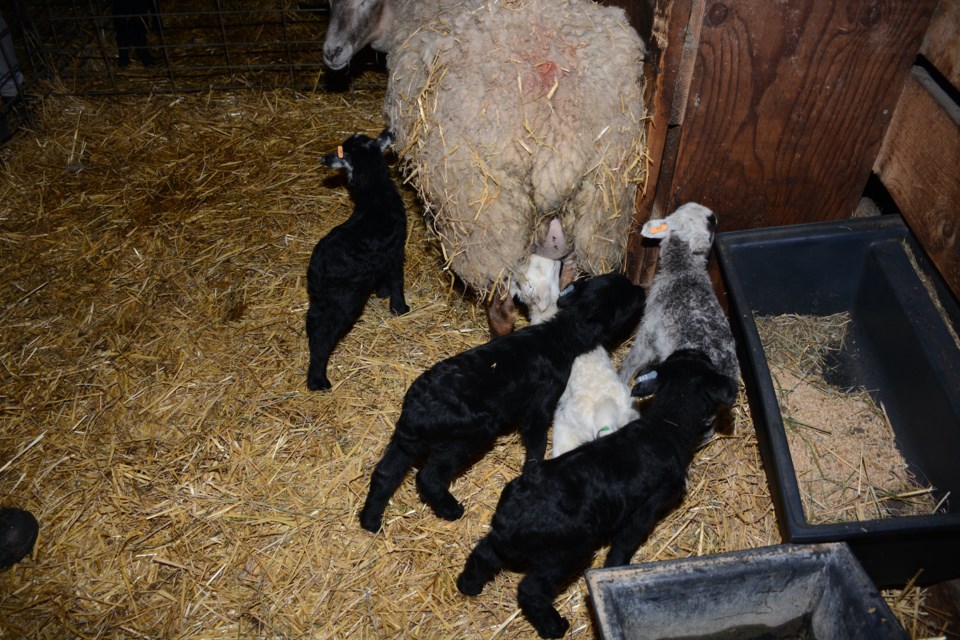WESTLOCK, ALBERTA – Leonard and Twyla Tomlinson, who farm west of Dapp, have raised sheep for the past 18 years. Twins and triplet lambs, and the occasional quadruplets are pretty normal for them. Their flock average is 2.1 to 2.5 live lambs per ewe.
But April 22 was a real surprise for them, when one of their ewes gave birth to five healthy lambs. According to research, that only happens about once in a million and often not all survive.
These lambs, two females and three males, not only survived, but they are thriving. At birth, they were six and seven pounds each, and when they weighed them April 28, they had already gained a pound. Just two years old, the ewe had quadruplets in her first lambing last year.
Of course, the ewe, which the Tomlinson said is a one third Rideau Arcott, one third Canadian Arcott and one third Romanov, can’t successfully feed them all, so some additional bottle feeding is necessary, as it is with some of the triplet and quadruple birth lambs. It’s extra work for the Tomlinsons, but they feel the reward in the end is worth it. The ram that fathered this rarity of births is a full blood Romanov, which they purchased four years ago from neighbours Chad and Lana Beamish, who live just a few miles away.
Leonard says Twyla is the main livestock person on their farm, and loves working with their animals. They started raising sheep in 2004 when they moved from her parents’ farm to the farm a couple of miles away that Leonard’s parents had owned.
“We bought 30 bred Charlotte ewe lambs from them. Later, we bought a Rideau Arcott ram for a maternity sire and a Canadian Arcott for a terminal sire,” Twyla said. “We mainly keep our ewe lambs for replacements (they intend to keep one of the quintuplet ewe lambs).”
They added to the flock in 2011 when they purchased 20 full blood Rideau Arcott ewe lambs from Ivan and Gladys Foster, who farm southwest of Fawcett.
“For the last 10 years, we have been lambing out 200 ewes,” Twyla said. “Normally, we start lambing March 1, but in the last five years, we have started Feb 1 to take advantage of the better market prices in May and June.”
Late last week, she said they still have 50 ewes to lamb out, and 40 of them are ewe lambs.


